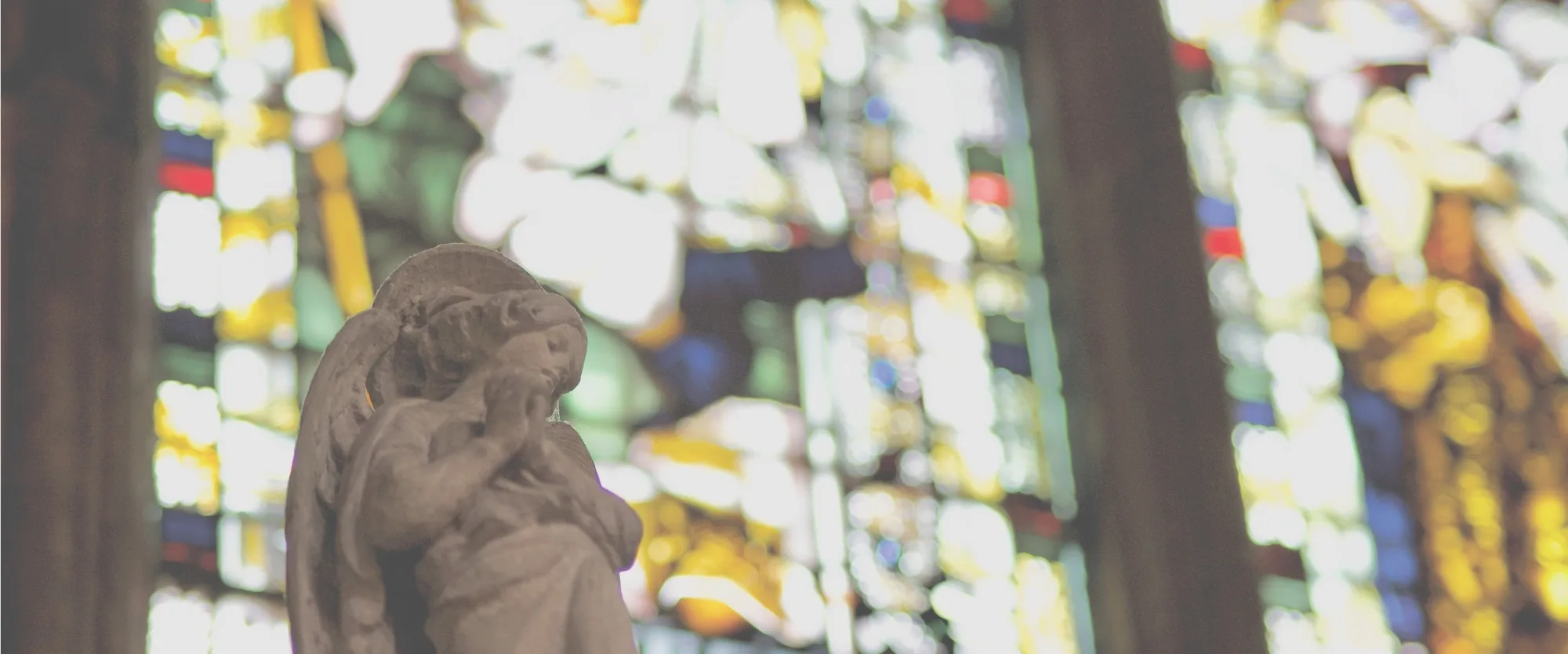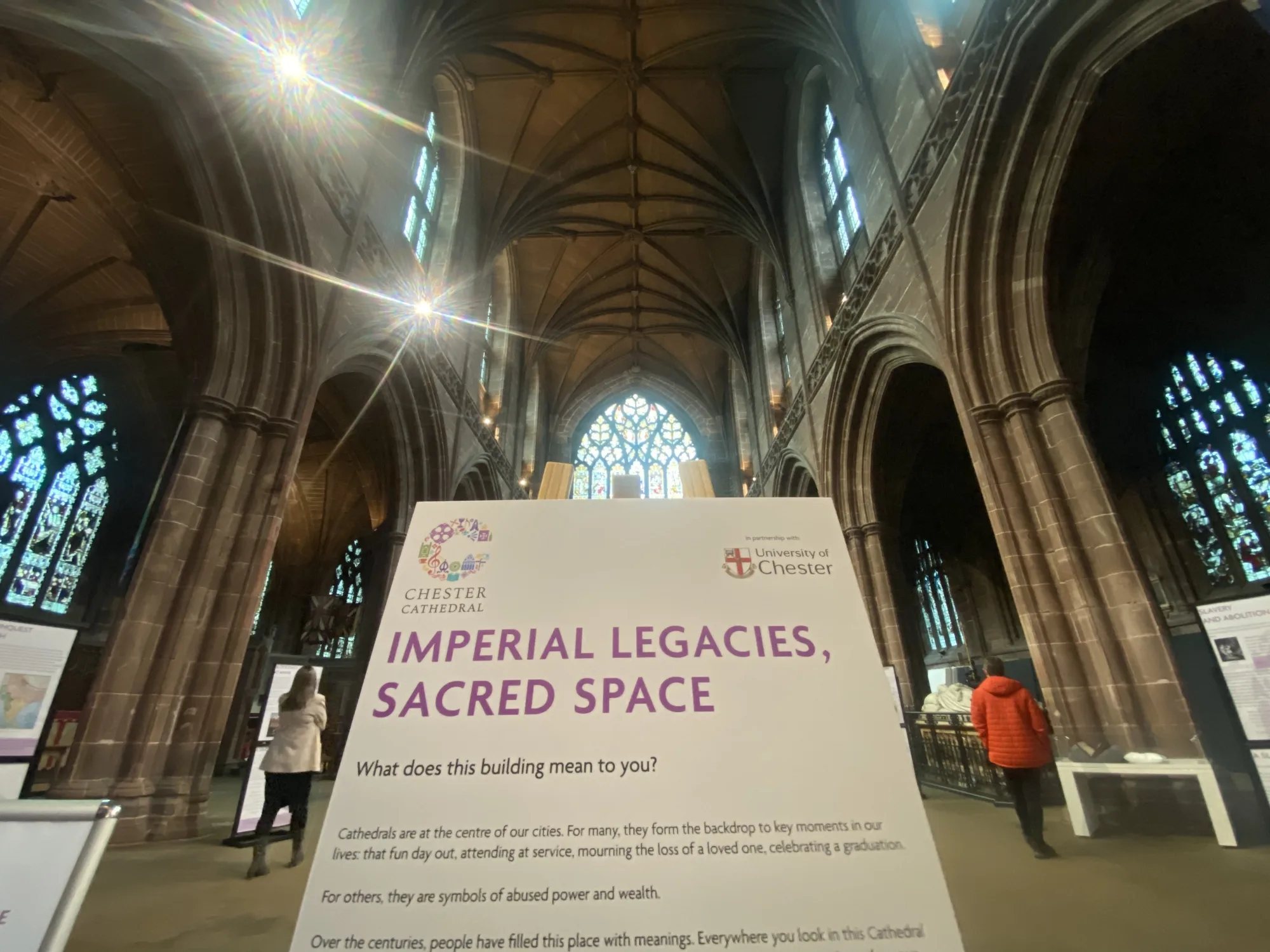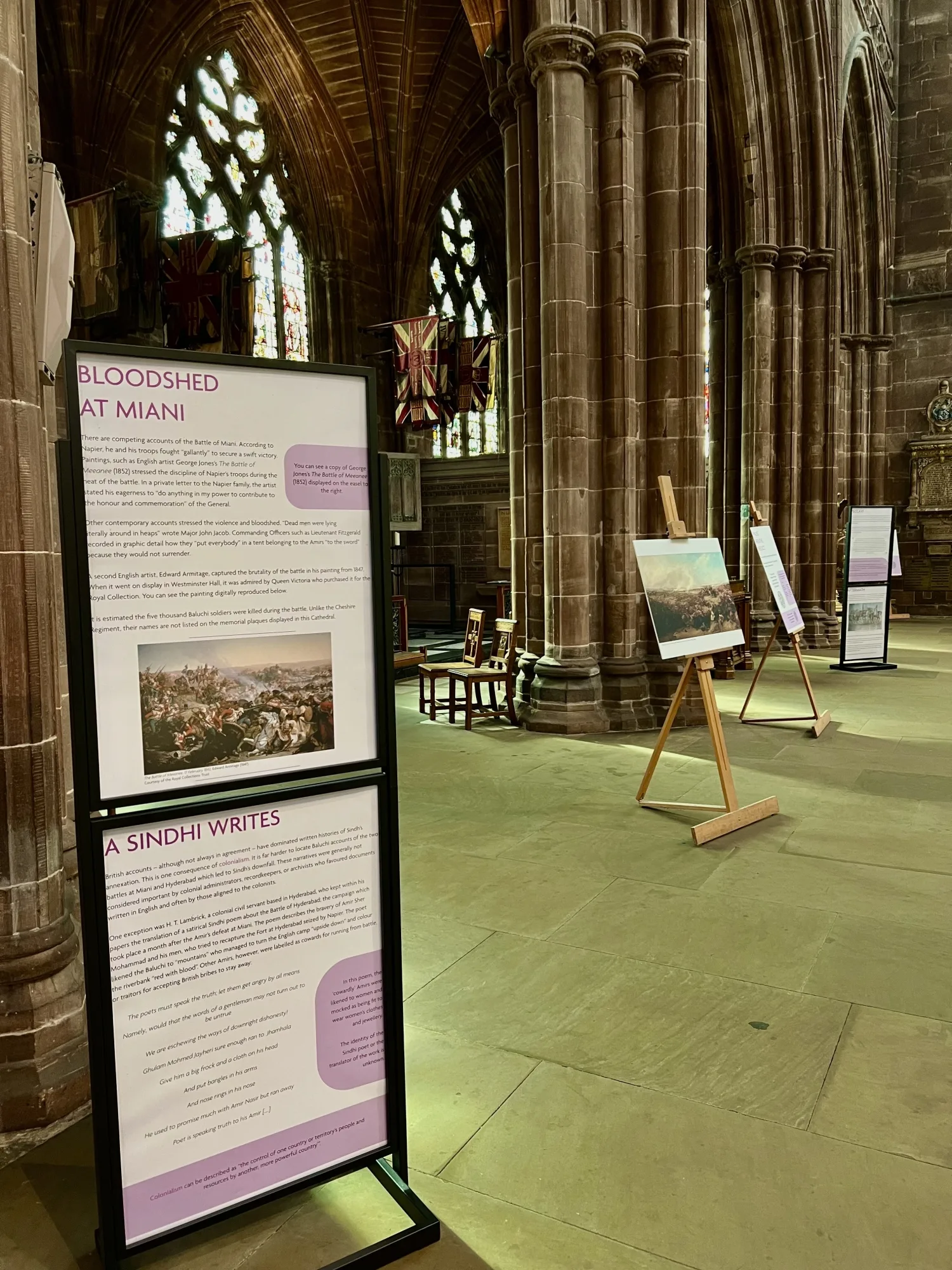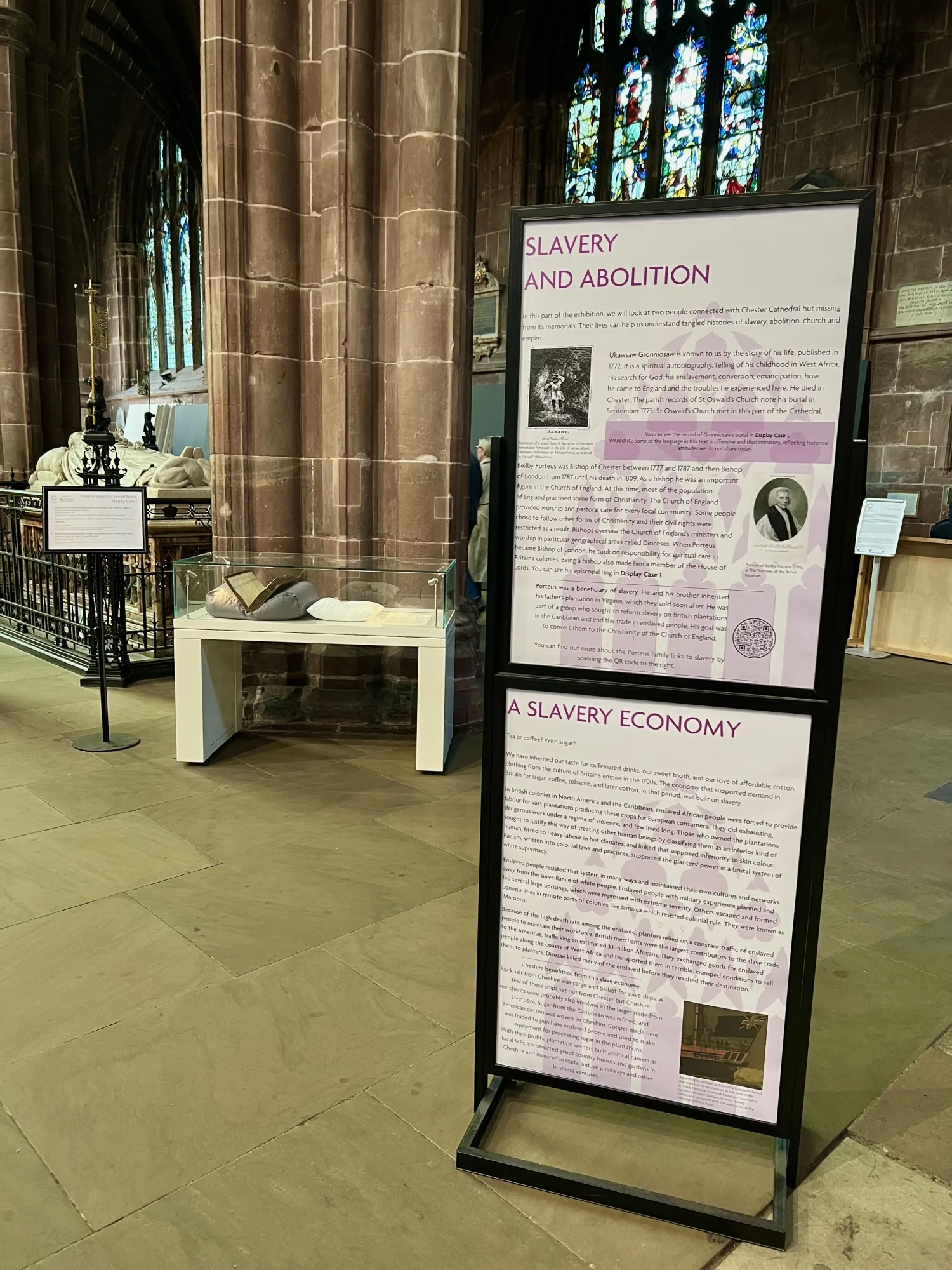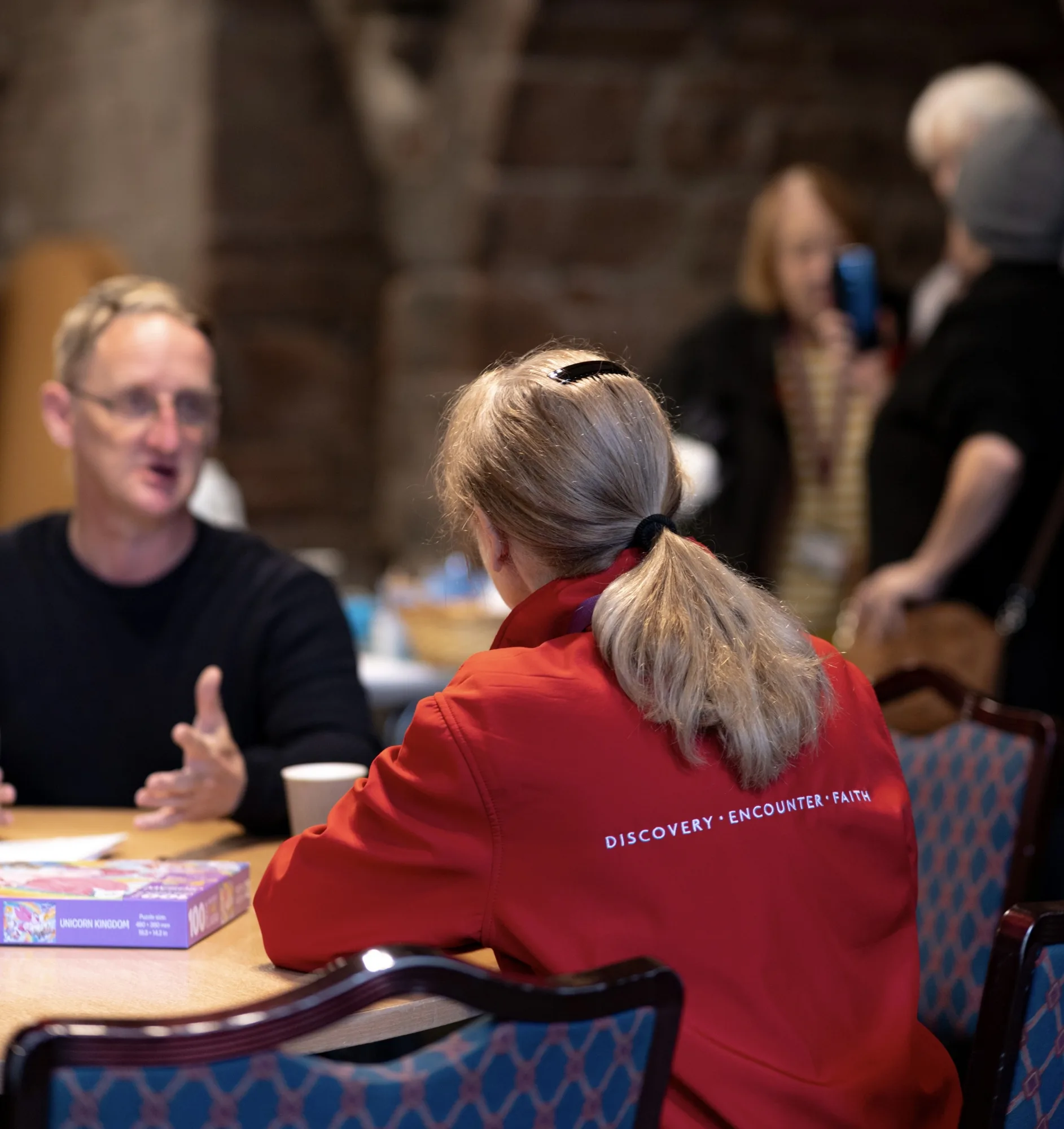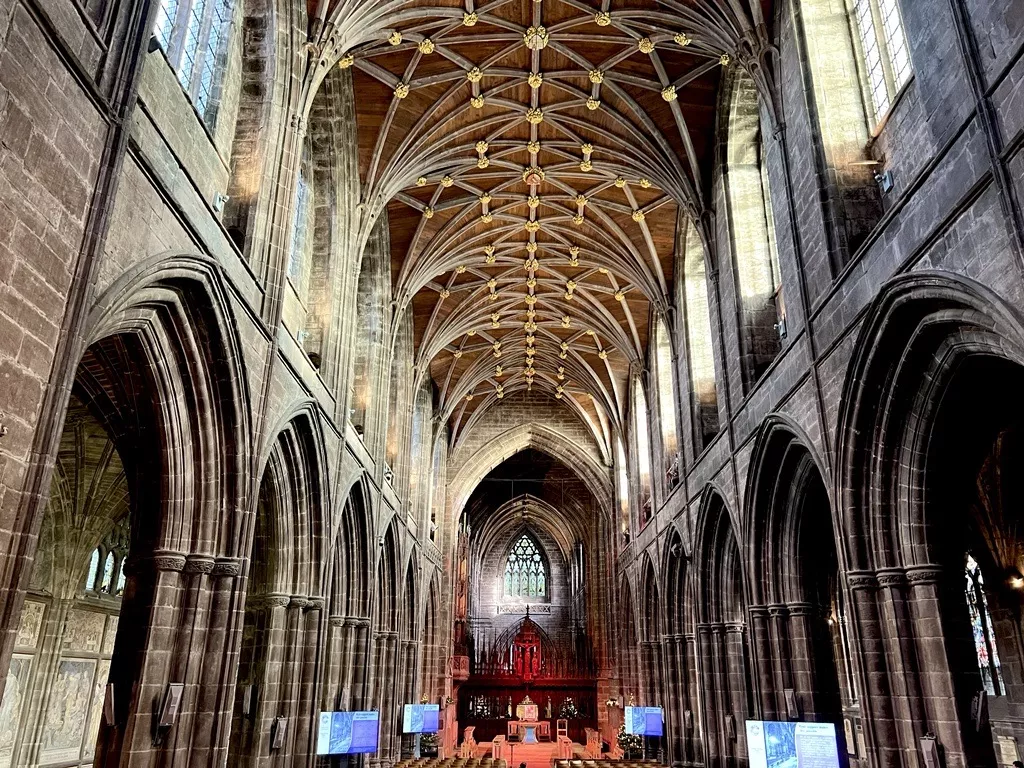Imperial Legacies, Sacred Space was an exhibition that was on display in the South Transept of Chester Cathedral from Thursday 18 – Tuesday 30 May 2023. The exhibition was created and curated in partnership with the University of Chester and explored points of connection between colonialism, the transatlantic slave trade, and empire at Chester Cathedral.
This digital exhibition displays material that was part of the exhibition and summarises some of the activities around it. To complement the exhibition and provide opportunities for further reflection and conversation, student-designed performances, a lecture, panel discussion, and reflection sessions were available for the public and the Cathedral community. These activities are also represented in this digital exhibition.
What does Chester Cathedral mean to you?
Cathedrals are at the centre of our cities. For many, they form the backdrop to key moments in our lives: that fun day out, attending a service, mourning the loss of a loved one, celebrating a graduation.
For others, they are symbols of abused power and wealth.
Over the centuries, people have filled Chester Cathedral with meanings. Everywhere you look in this Cathedral you can find reminders of people and their stories. But there are some stories you can’t read on our walls. Stories that link this building to a history of Britain, its empire, and the transatlantic slave trade.
Imperial Legacies, Sacred Space seeks to tell the hidden narratives of colonialism, slavery, and empire at Chester Cathedral. The content of the exhibition has been informed by research from the University of Chester and included objects and memorials from Chester Cathedral, objects on loan from Cheshire Archives, and images reproduced by kind permission from Cheshire Archives, Cheshire Military Museum, Royal Collections Trust, The British Museum, National Maritime Museum, National Portrait Gallery, and the British Library.
The two case studies explored in this exhibition use monuments and objects from the Cathedral collection as a starting point for considering why items of colonialism are in our Cathedral and what they tell us about understandings of colonialism in our past.
You are invited to read through both case studies below and pause where prompted to reflect. There is an audio guide which can be accessed by clicking the links below. When displayed in the building, visitors were directed to quiet spaces for private reflection and a member of our team was ready to provide support should anyone need it. At the bottom of this digital exhibition, you can find further resources that you might find helpful.
Case Study: Colonial memorials
Presented on the east side of the South Transept to line up with the Napier and ‘Hyderabad/Sindh’ memorial, this case study focussed on a single narrative linked to the two memorials picture below. Visitors were encouraged to go over to the memorials during the exhibition and engage with them. Click here to open the panels in the order they were presented at Chester Cathedral. To listen to the audio guide along with or instead of the panels, click here.
Case Study: The abolitionist church
This case study took as its starting point an episcopal (Bishops’) ring in the Cathedral collection which belonged to Bishop Beilby Porteus, the first ‘abolitionist’ bishop of the Church of England. Click here to open the panels in the order they were presented at Chester Cathedral. To listen to the audio guide along with or instead of the panels, click here.
Legacies
The two case studies presented historical facts and offered some interpretation. Where do we go now? The Legacies panel provides a summary of the exhibition and suggests some ways forward. During the exhibition, it also encouraged visitors to engage with the activities supporting the exhibition and provided a QR code link to additional resources. Click here to open the panel. To listen to the audio guide along with or instead of the panels, click here.
Activities
The exhibition was supported by a range of in-person activities including creative performances, public lectures, and reflection sessions.
The specially curated performances by University of Chester students exploring themes from the exhibition and their own research.
Resources
As part of the exhibition, resources were provided to give further context to the case studies and support independent learning. You can download the list of resources here. This list was last updated on Thursday 11 May 2023.
Report and Recommendations
Chester Cathedral was presented with a report from the Imperial Legacies, Sacred Space project's working group. It summarised the outcomes and provided a list of actions using its findings. The report and recommendations can be read here.
In response to the report and recommendations, the Very Revd Dr Tim Stratford, Dean of Chester Cathedral said
The Imperial Legacies, Sacred Space project built on our earlier work including Global Images of Christ (2021) to further interrogate our entanglement with the legacies of slavery and empire. We welcome this report and are taking the time to consider how - with our limited resources - we can undertake the recommendations outlined in this document.
The Chapter of Chester Cathedral responded
The Chapter of Chester Cathedral acknowledge the Imperial Legacies, Sacred Space report following the pilot study and exhibition of the same name in May 2023. The recommendations in the report are a challenging call for learning, growth, and community working across Cathedral life. We are grateful for partnership with so many different groups as we continue on this journey, with the support and research provided by the University of Chester and the feedback and input of our stakeholders most especially appreciated.

